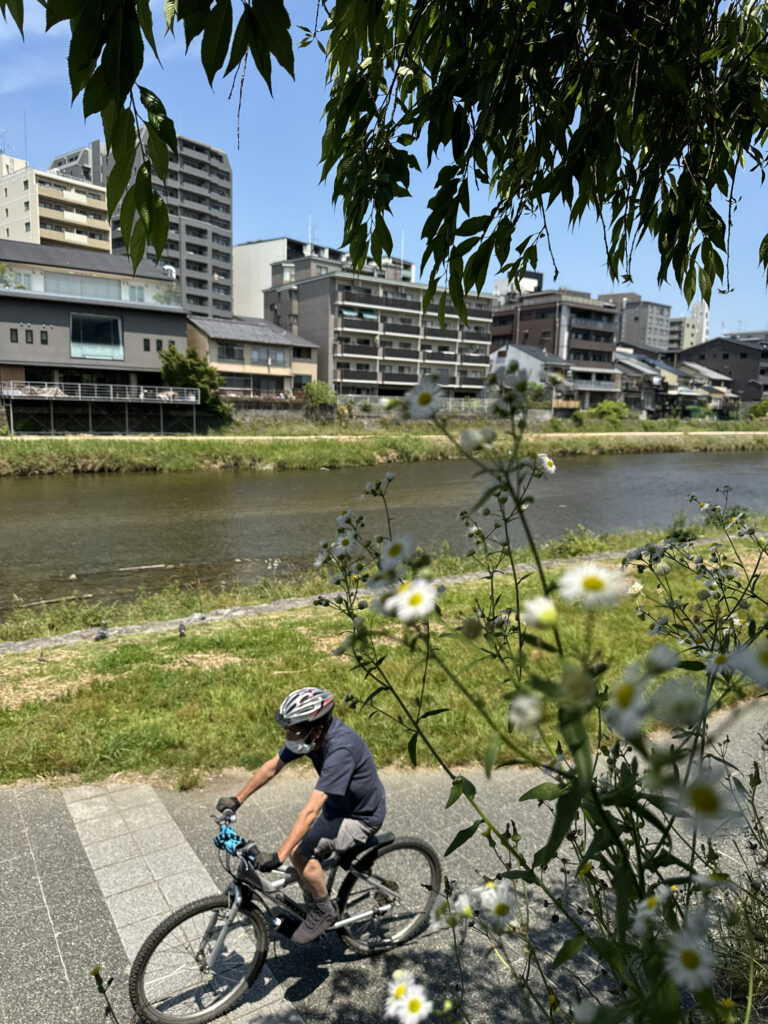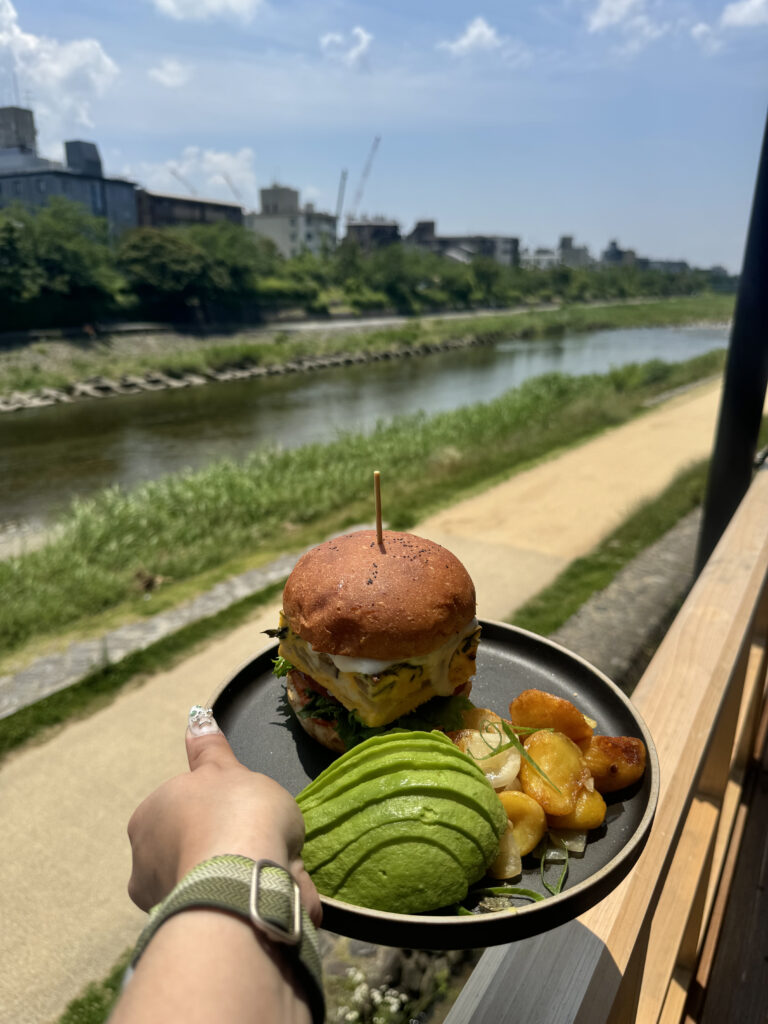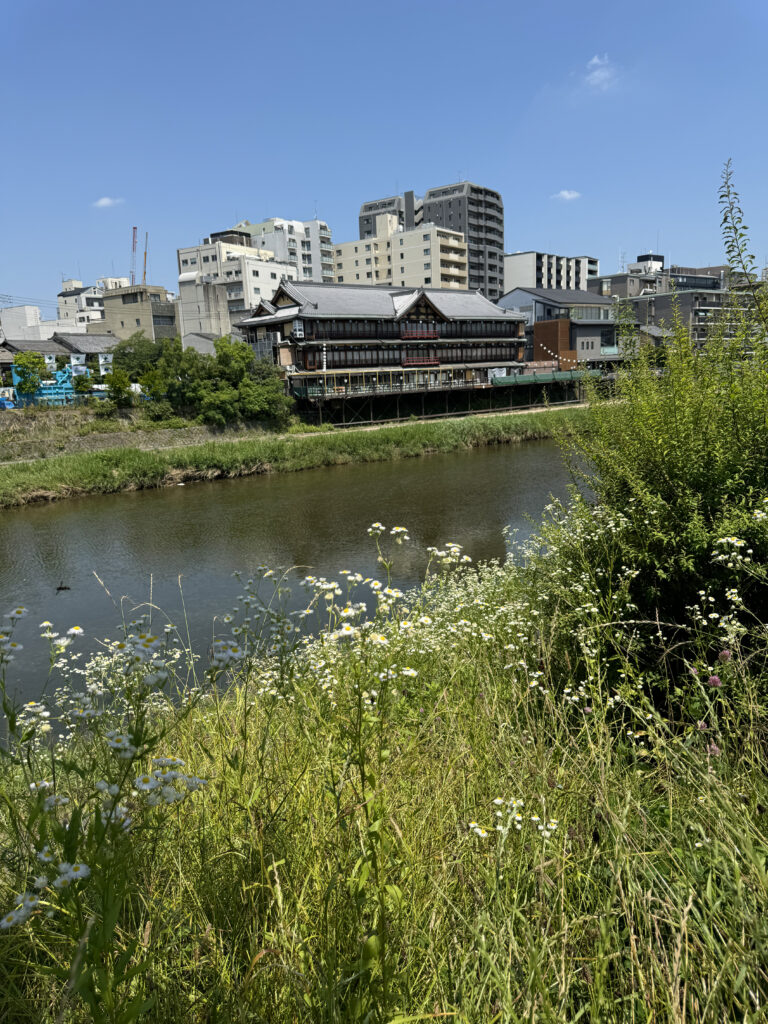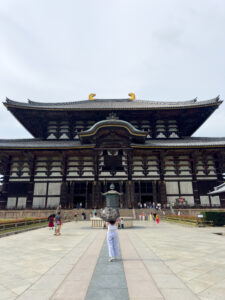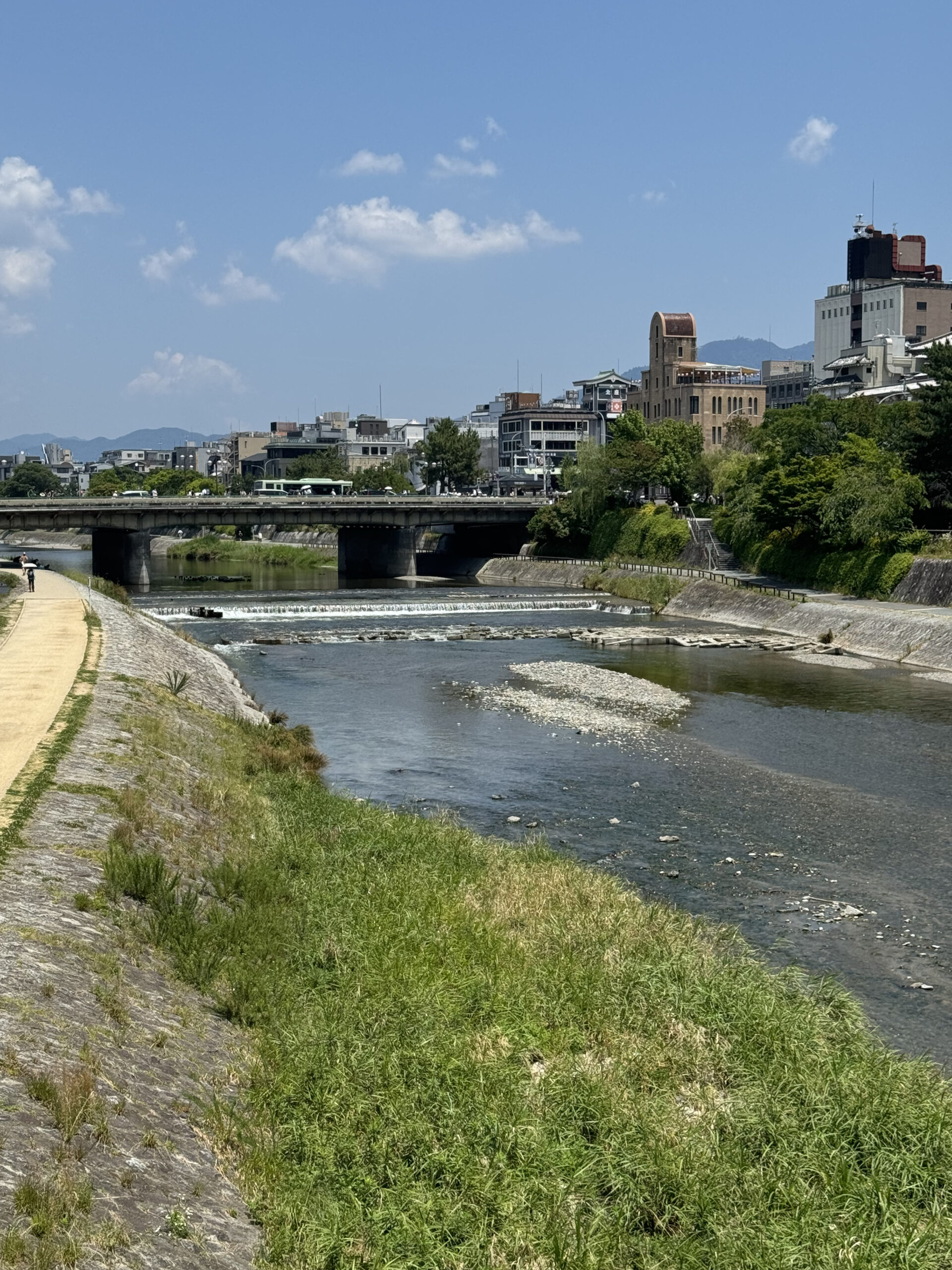
The Kamo River, or Kamogawa, is an enduring symbol of Kyoto.
This tranquil river, flowing from the sacred mountains to the north of the historic heart of Kyoto, is not just a waterway but a living testament to the city’s cultural and natural heritage. For centuries, the Kamo River has been a place of recreation, reflection and community, embodying the spirit of Kyoto.
The Kamo River has played a significant role in Kyoto’s history. During the Heian period (794-1185), when Kyoto served as the imperial capital of Japan, the river was integral to city planning and daily life. It provided water for agriculture, was used for transportation and offered a scenic setting for the aristocracy’s leisure activities. The riverbanks were the site of numerous cultural and religious events, including poetry gatherings and cherry blossom viewing, establishing traditions that continue to this day.
In the centuries that followed, the Kamo River remained a vital resource for the city. During the Edo period (1603-1868), the riverbanks were bustling with activity as merchants and craftsmen set up shops along its edge. The river also played a crucial role in the transportation of goods, linking Kyoto with other regions.
The Kamo River is also more than just a geographical feature; it is deeply embedded in the cultural fabric of Kyoto. One of the most notable aspects of the river is its connection to the seasonal changes and traditional festivals.
Each season brings a unique charm to the riverbanks. In spring, the cherry blossoms (sakura) bloom along the river, drawing crowds who gather for hanami (flower viewing) parties. Summer brings the cooling breezes and the lively atmosphere of the Gion Matsuri, one of Japan’s most famous festivals, with its grand procession and evening festivities.
Autumn transforms the riverbanks into a tapestry of red and gold with the changing of the leaves, offering a picturesque setting for leisurely strolls. In winter, the river exudes a serene beauty, often dusted with snow, creating a peaceful retreat from the hustle and bustle of city life.
Additionally, the Kamo River is frequently mentioned in Japanese folklore, literature and art. It represents the fleeting essence of life as well as the timeless beauty of the natural environment and is frequently portrayed in ukiyo-e prints, haiku poetry and classical literature.
The Kamo River is a beloved recreational space for the people of Kyoto. Its banks are lined with pathways that are popular with joggers, cyclists and families out for a leisurely walk. The river provides a peaceful retreat where residents and visitors alike can escape the urban environment and connect with nature.
In the warmer months, the riverbanks are alive with activity. Young couples sit by the water, enjoying the romantic ambiance, while families picnic and children play along the shore. Street performers and musicians often entertain passersby, adding to the river’s lively and welcoming atmosphere.
The variety of eateries that provide breathtaking views of the Kamo River is among its most appealing characteristics.
Kyoto has exceptional cuisine and stunning scenery, making dining by the Kamo River an unforgettable experience. The eateries offer a wonderful environment where one may have a meal while taking in the peaceful surroundings, in particular those with outside terraces.
A pleasant dining experience is created by the wooden terraces over the river that many eateries open during the summer. Both locals and tourists choose it because of the atmosphere created by the sound of the running water and the refreshing winds.
The Kamo River still holds great significance in Kyoto’s history, but it now faces a number of difficulties. Threats to the ecological health and cultural value of the river come from urbanization, pollution and climate change. Stricter environmental laws, community-led cleanup projects and educational campaigns to increase public understanding of the value of protecting this natural gem are some of the measures being taken to address these problems.
The Kamo River represents Kyoto’s rich cultural legacy, historical background and scenic beauty. It is more than just a river. The Kamo River has always been important to the people of Kyoto, serving as a hub for inspiration, leisure and community, from its use in historic Japan to its importance in modern urban life.
A constant in the city’s evolution, the Kamo River serves as a reminder of the ongoing relationship between the natural world and human civilization. Future generations will be able to appreciate the beauty and significance of this priceless waterway by joint efforts to maintain and protect it, guaranteeing to keep Kyoto’s energy moving just as the Kamo River flows.
